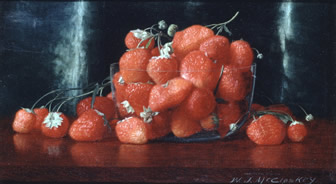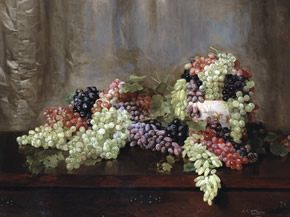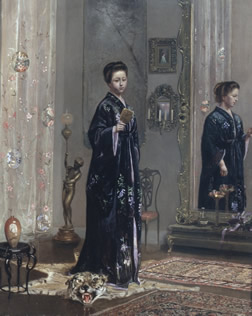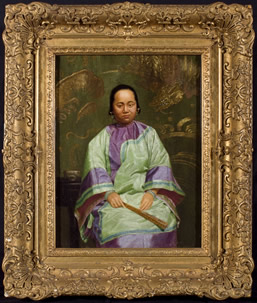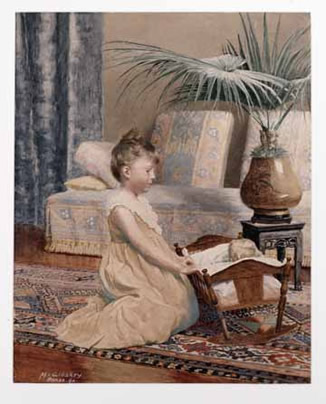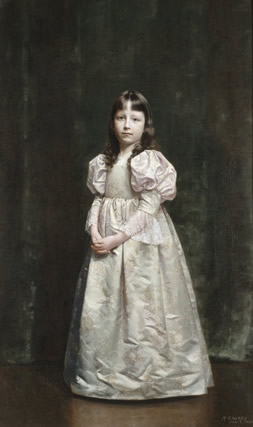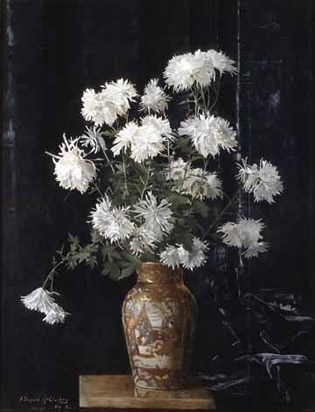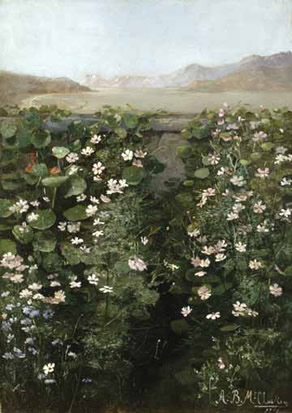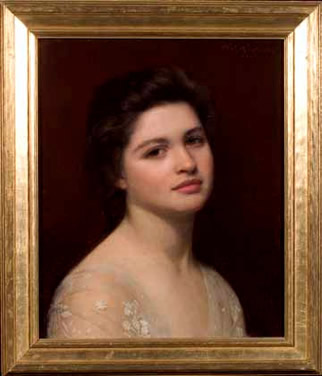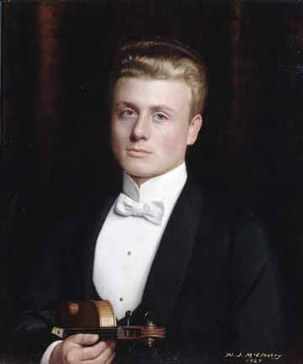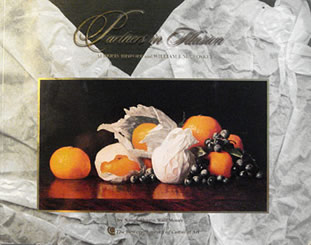
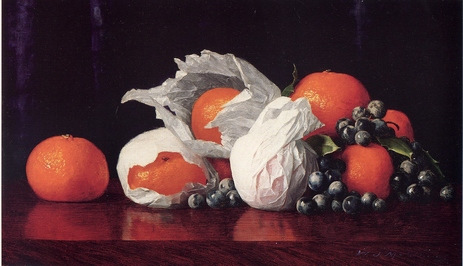
Organized by the
Bowers Museum of Cultural Art
Santa Ana, California
- Exhibition List PDF -
- Exhibition Information -
- Artist Bio -
One of the major goals of American Nineteenth Century still life painters was to realistically render objects so that the human eye might be fooled into believing the objects were real. Art historians use the French term "troupe l’oeil," meaning "fool the eye" to describe such works. The California/New York painters, William and Alberta McCloskey, were masters of this kind of illusionistic painting. Art historians and collectors have long been curious to know more about the McCloskeys, who previously were known only through the approximately 20 still lifes that surfaced at auctions or were known to be held in museum collections. Therefore, it is exciting to learn that the Bowers Museum owns a collection of 39 paintings by the couple which demonstrate that they painted not only still lifes but also portraits and genre scenes. These works have rarely been shown to the public. The emphasis has been placed on still lifes and genre painting produced by the couple during the years of their marriage (1883 to 1898). Also featured are a few of the portraits painted by William in Los Angeles after 1915. Many of the McCloskey paintings have been restored to their original brilliance and the first-ever biography on the couple is now complete. In order to best show the artists' growth in subject and medium, the exhibit is arranged by subject matter. Each grouping is prefaced by an explanatory label. Before proceeding through the exhibit, mentally step back to the era of horse drawn carriages, electric trolleys, and leg-o-mutton sleeves, and imagine the McCloskey's paintings hanging in large, dimly-lit rooms amid highly carved Victorian furniture. This exhibition of 39 oil and watercolor works of art is the largest gathering of McCloskey paintings compiled to date. These exquisite still life and insightful portrait paintings have continued to gain recognition in American art circles. Original research shows the influence of Alberta Binford McCloskey (perhaps the better known of the two) during a time when few women painters received recognition. The works are drawn from the Bowers Museum’s permanent collection. |
